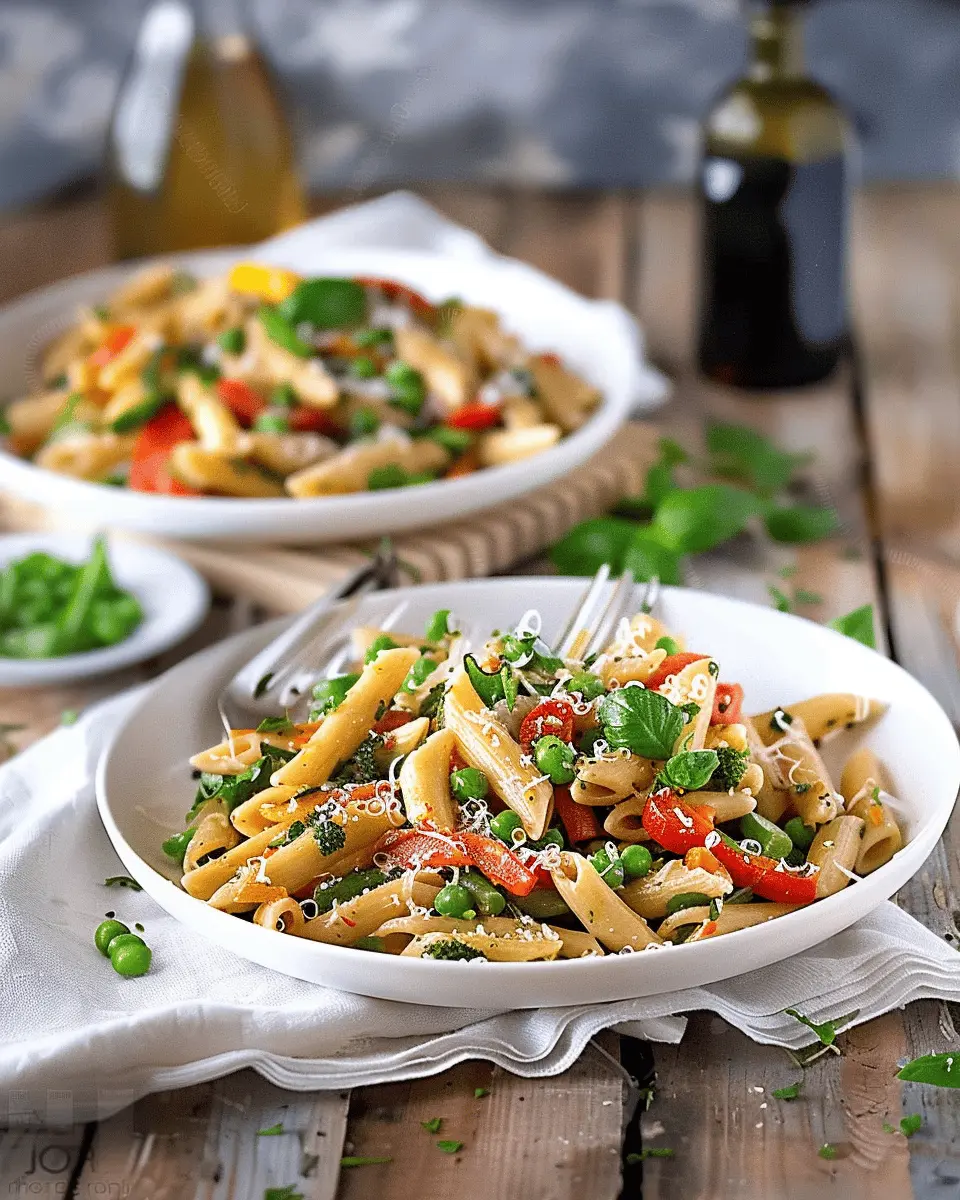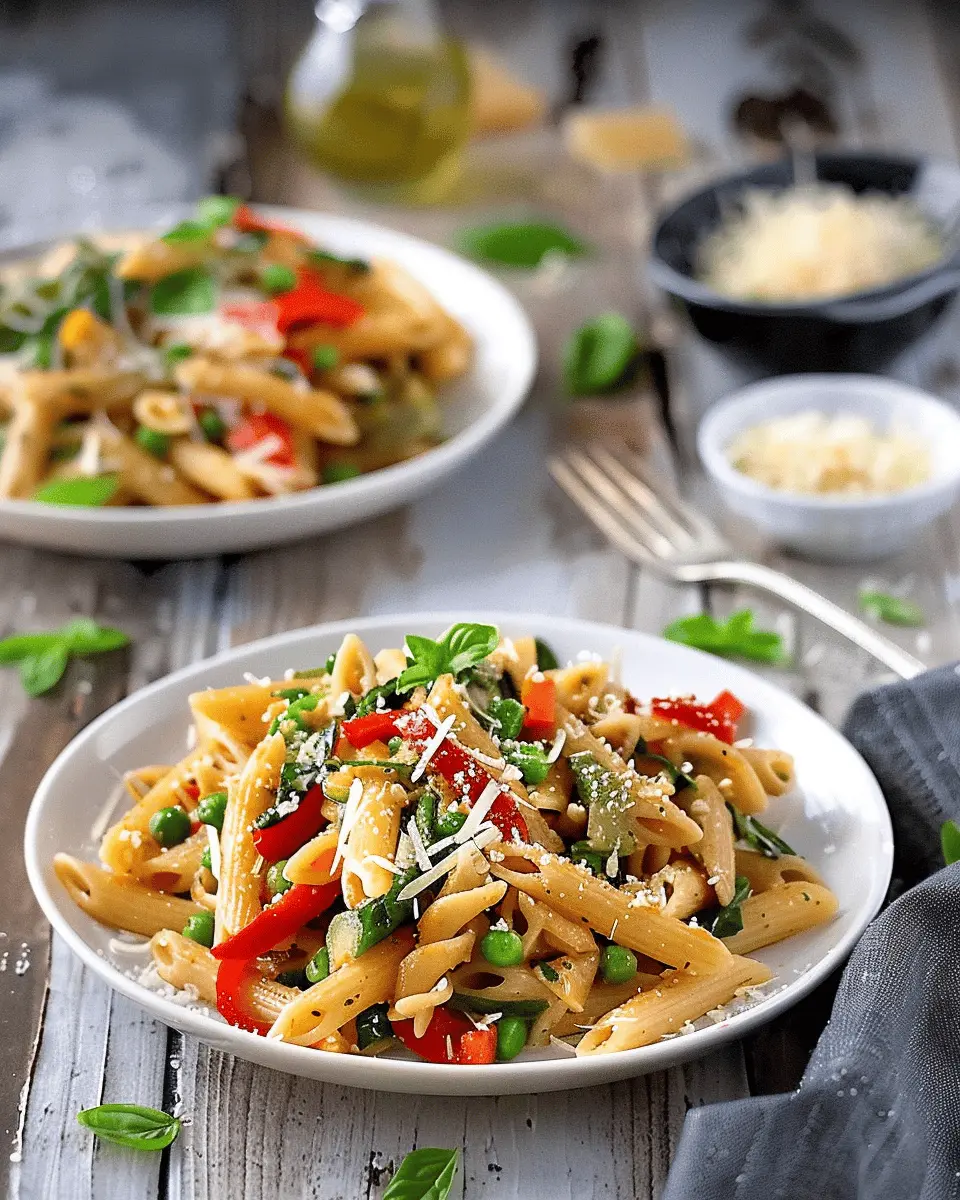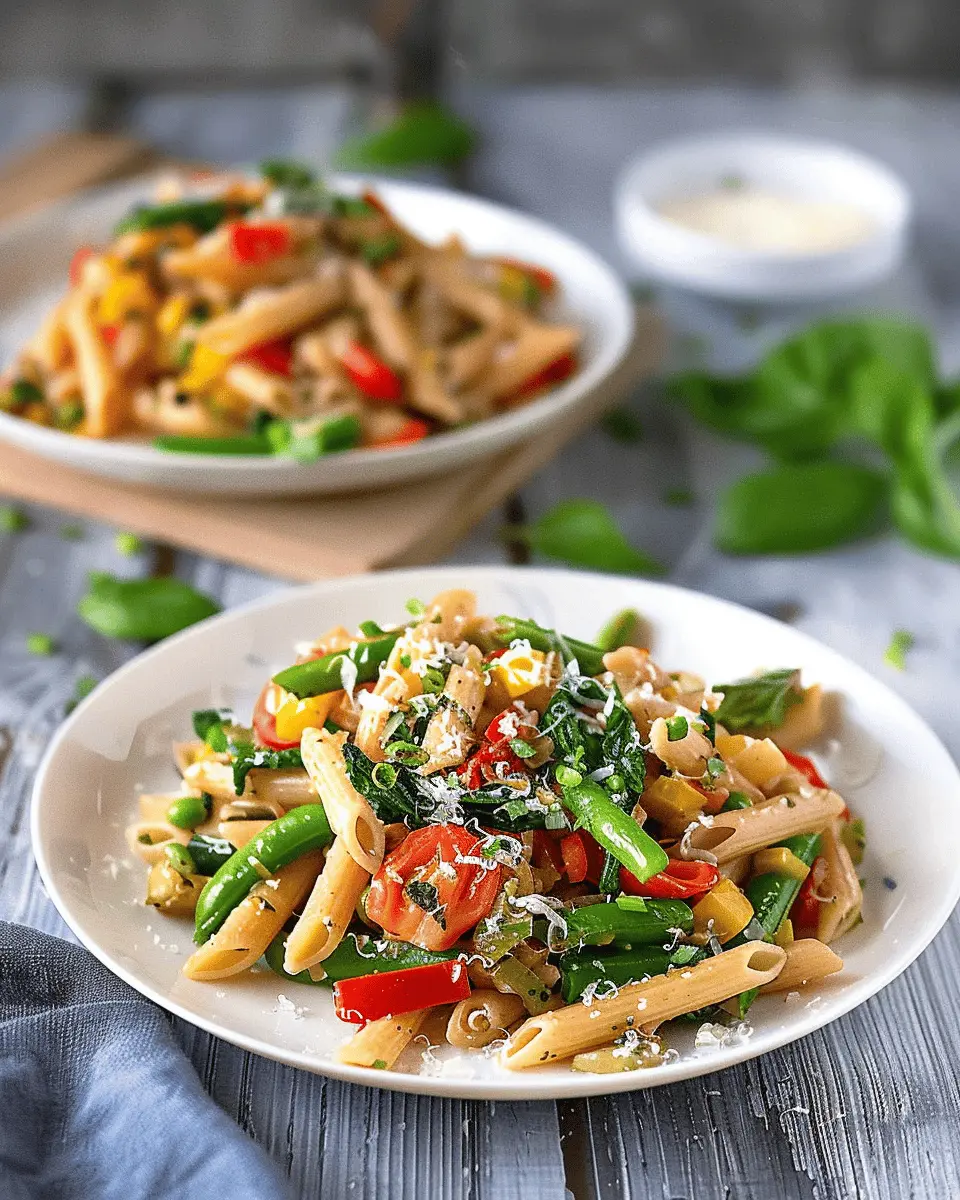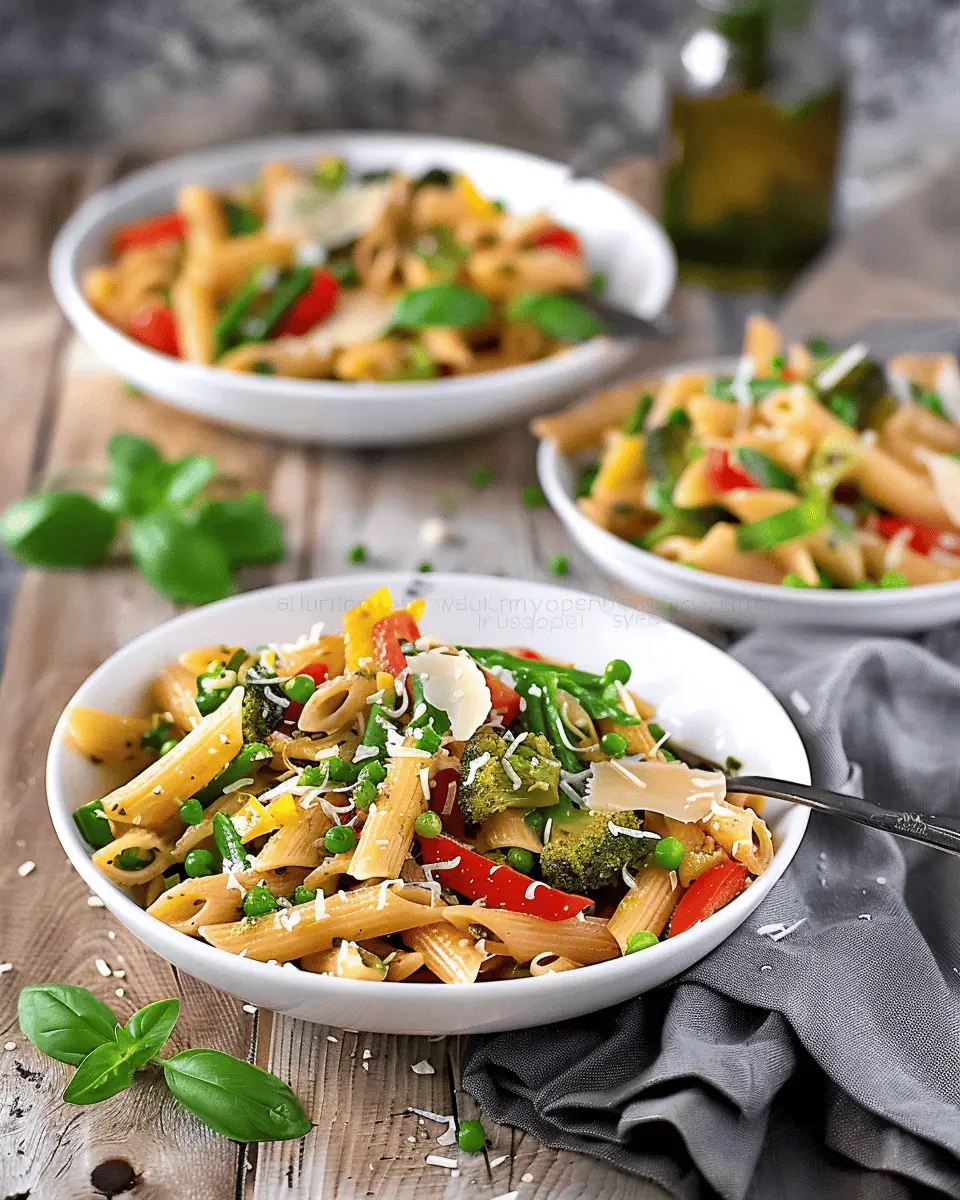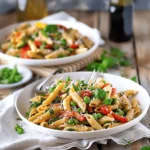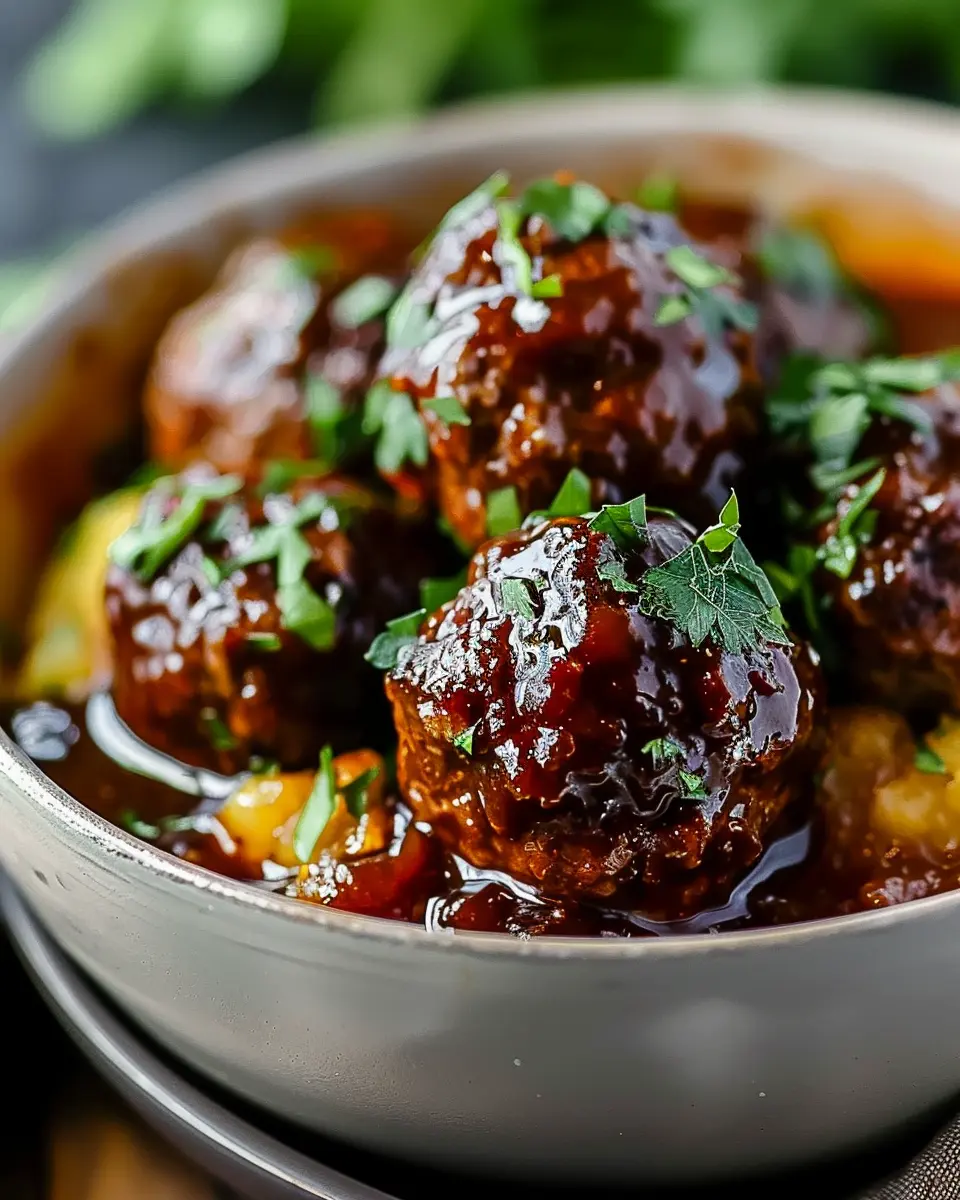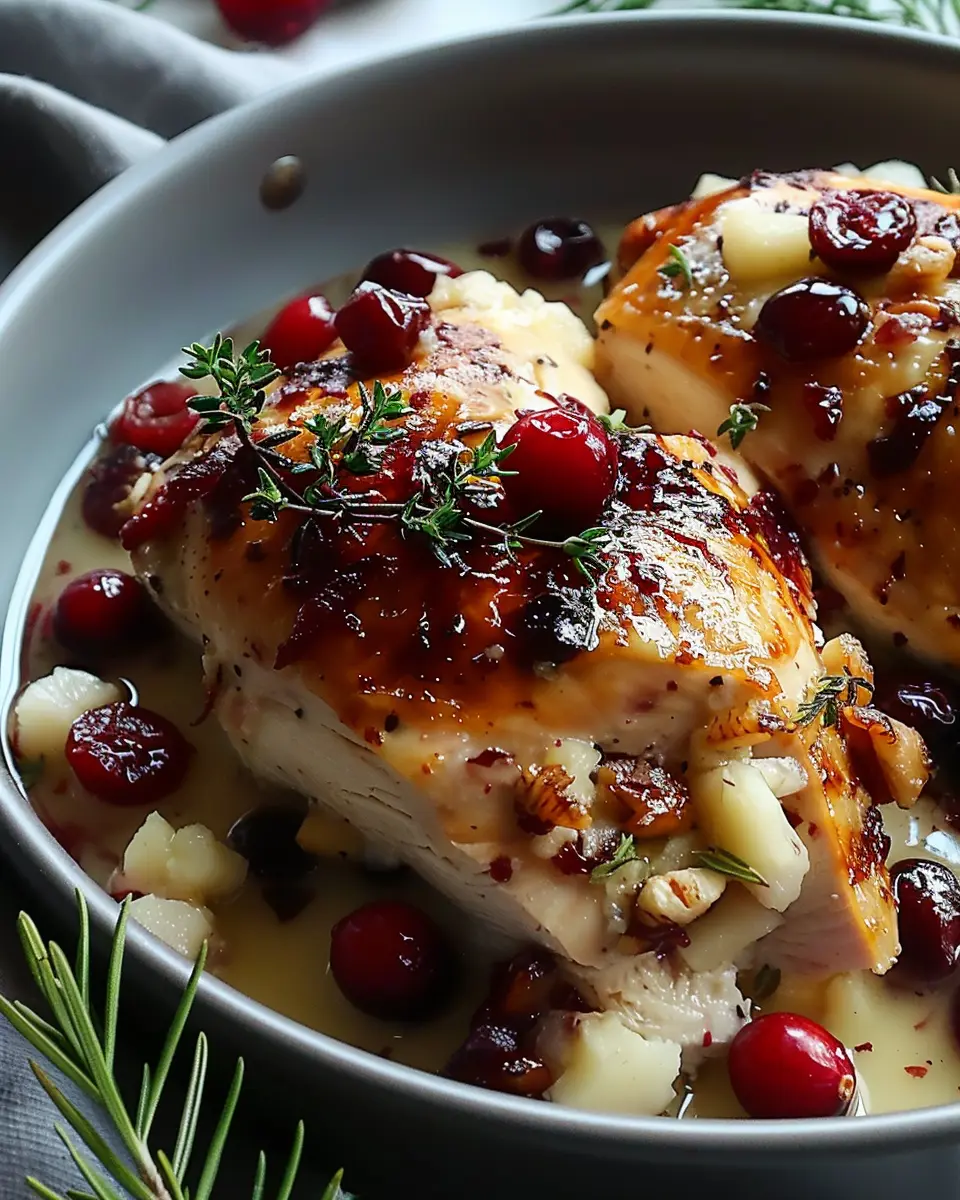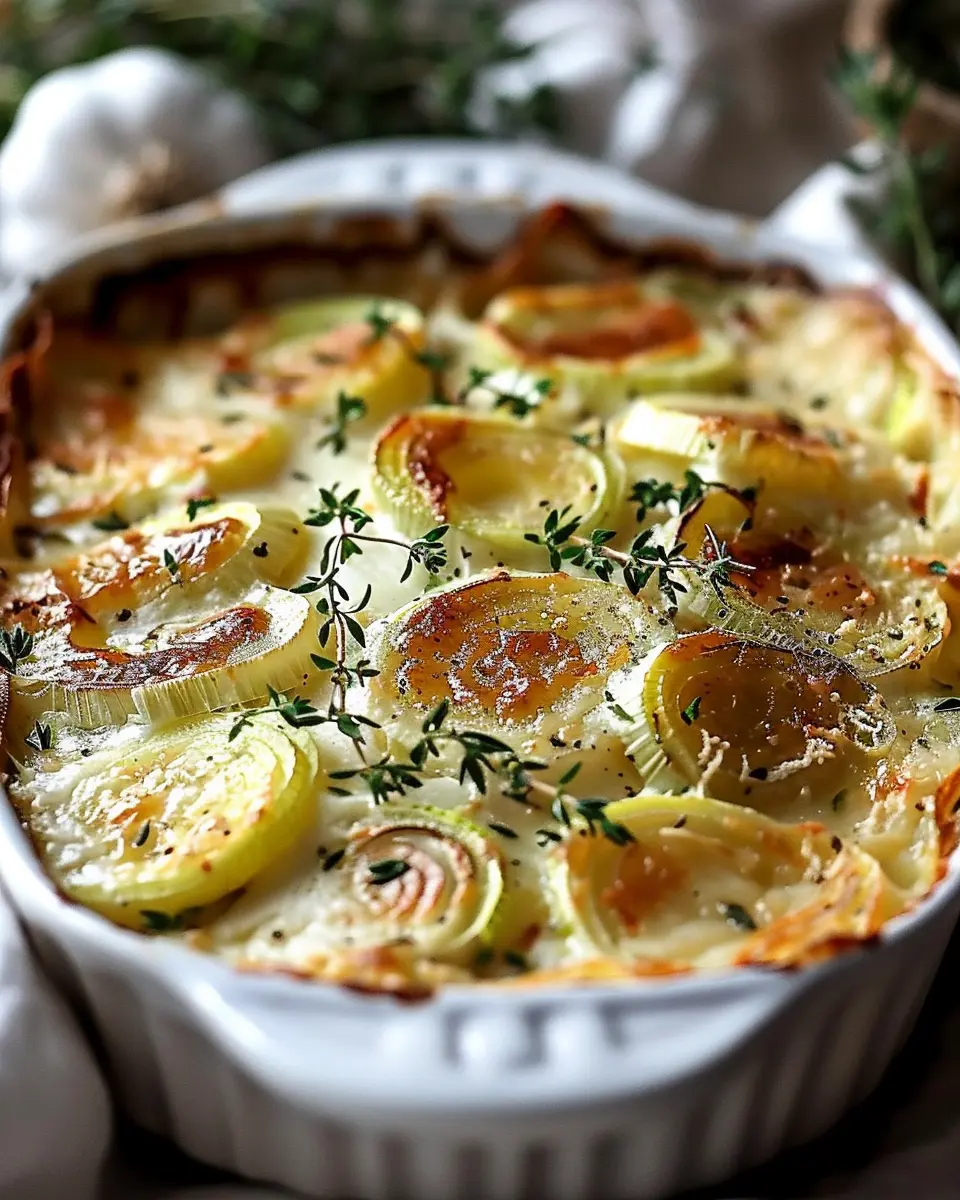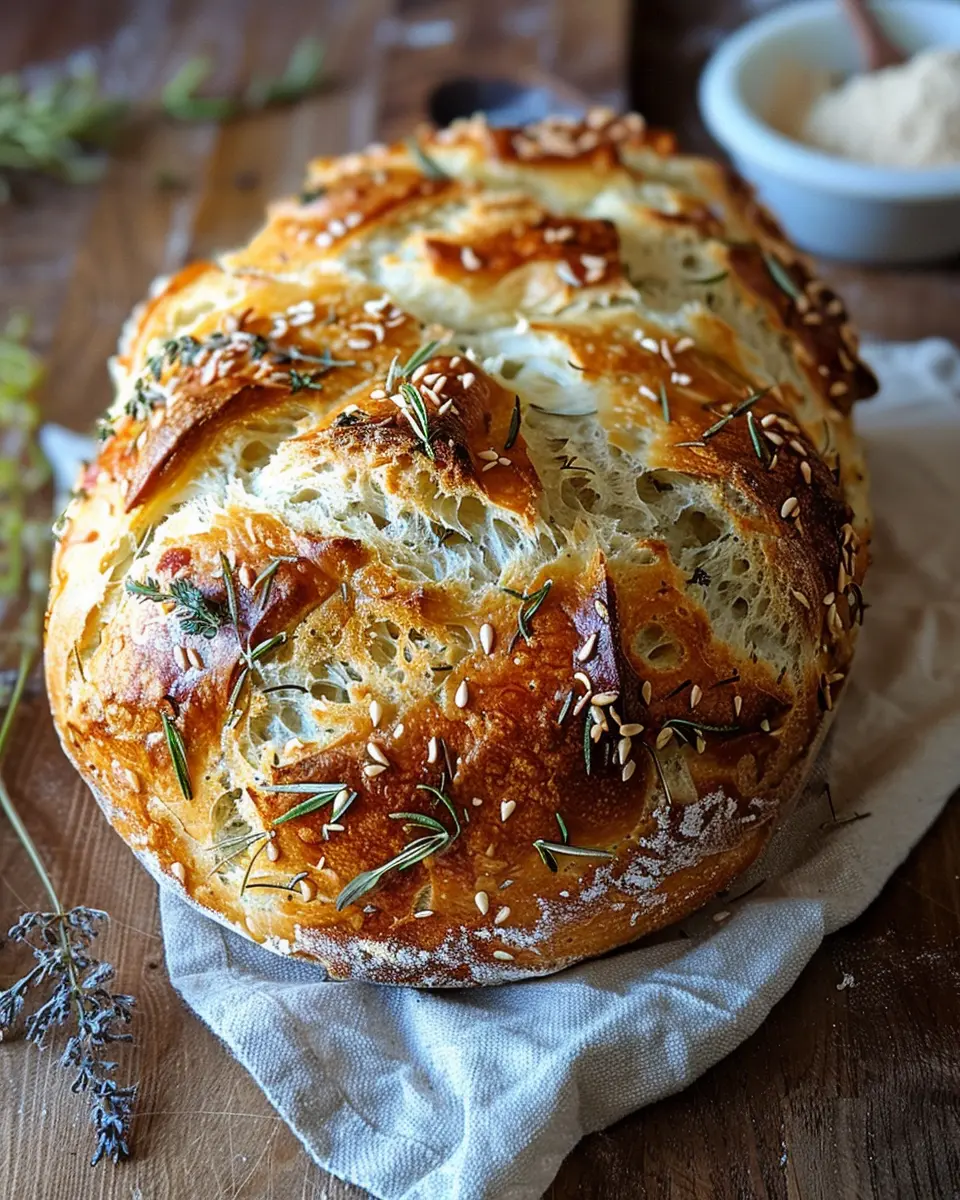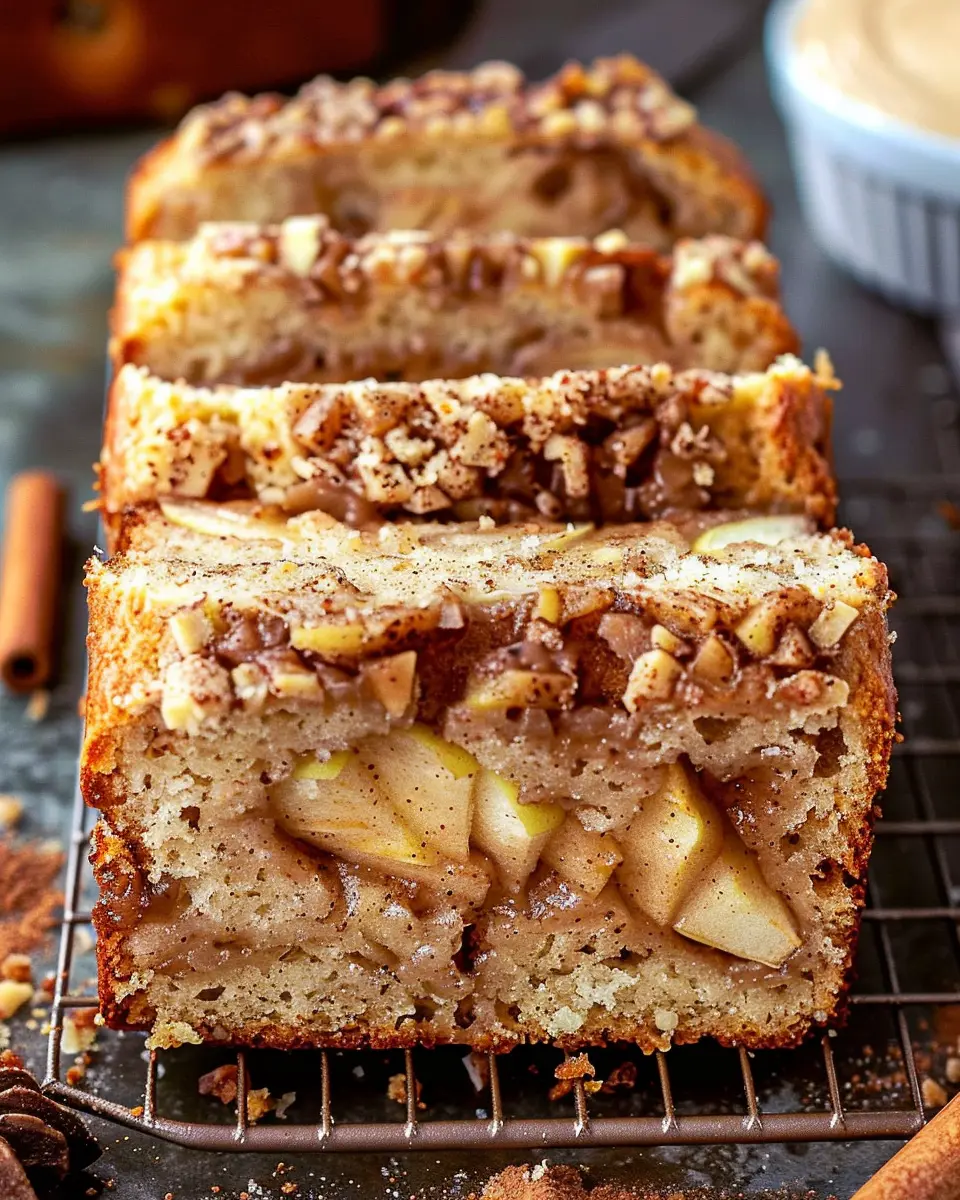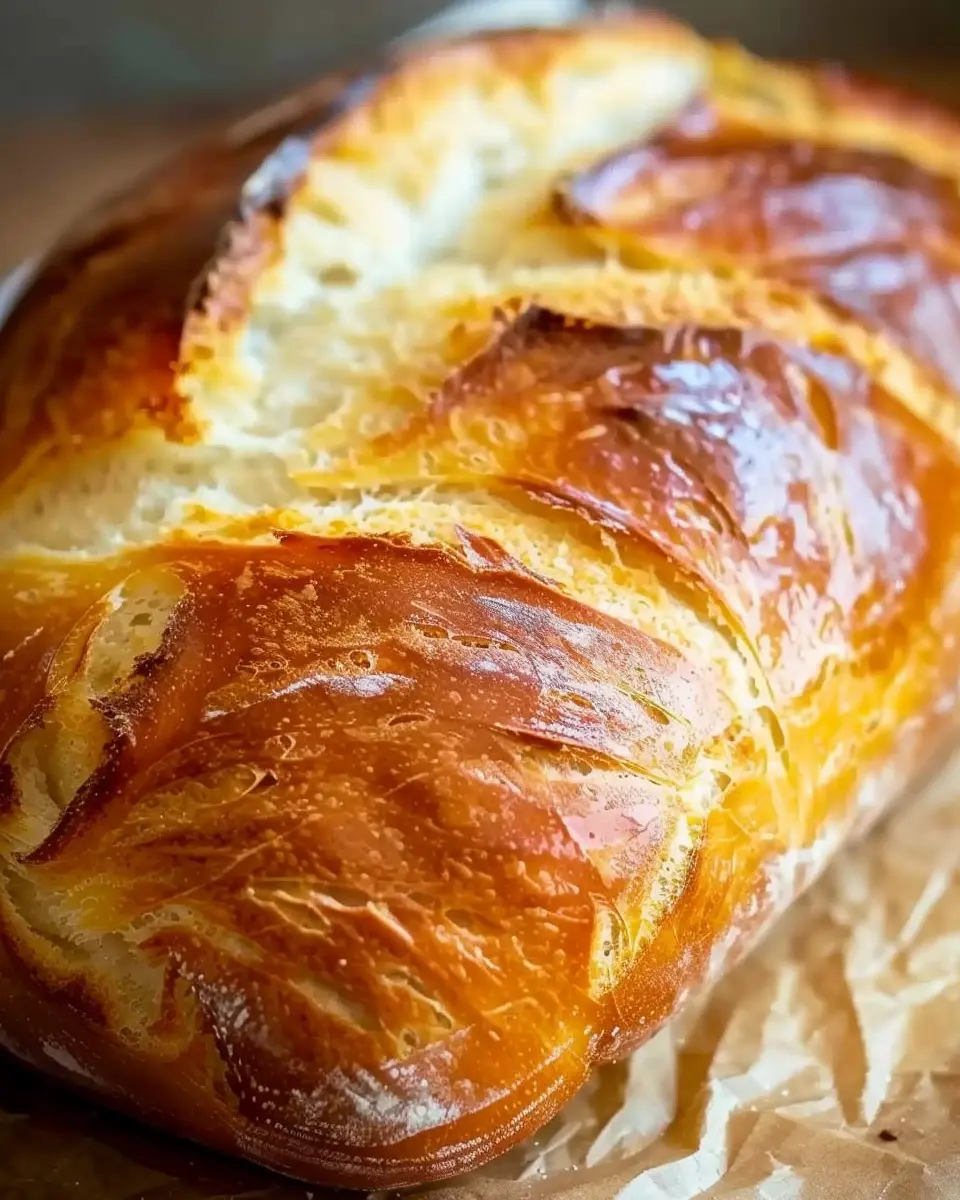Introduction to Pasta Primavera
What is Pasta Primavera and Why is it a Favorite Among Home Cooks?
Pasta primavera, meaning “spring pasta” in Italian, is a vibrant and delicious dish that celebrates fresh, seasonal vegetables. Historically, it was created in the 1970s in New York City and quickly became a beloved staple not just for its taste, but also for its versatility. So, why does pasta primavera hold such a cherished spot in the hearts of home cooks? Let’s dive in.
One of the major reasons pasta primavera shines is its adaptability. You can use almost any vegetables you have on hand, making it an excellent go-to for those busy weeknights. Imagine tossing together colorful bell peppers, fresh asparagus, zucchini, and cherry tomatoes for a delightful medley! Not only does this dish look appealing—actually, it practically begs to be photographed!—but you’re also packing in a variety of nutrients. According to the USDA, eating a diverse array of vegetables is essential for a well-balanced diet.
What’s also appealing about pasta primavera is how easily it can fit into different dietary preferences. Whether you’re looking for a vegetarian option or want to add proteins like turkey bacon or chicken ham, it’s flexible enough to accommodate everyone at your table. Plus, with its simple ingredients and quick cooking time, you can whip it up in under 30 minutes, making it perfect for young professionals balancing a busy lifestyle.
The beauty of preparing pasta primavera lies in its straightforward process. You simply cook your pasta, sauté your chosen vegetables, and toss everything together with a drizzle of olive oil or a light sauce. You can also explore flavor enhancements with herbs, garlic, or a sprinkle of cheese, allowing you to make the dish uniquely yours.
In summary, whether you’re hosting friends or enjoying a quiet night at home, pasta primavera offers a beautiful blend of colors, flavors, and nutrients, making it a perfect dish any time of the year. Now that you have a taste of what this dish is all about, let’s explore some delicious recipes to bring your pasta primavera to life!
Ingredients for Pasta Primavera
Essential ingredients for a classic Pasta Primavera
Cooking Pasta Primavera is all about fresh flavors and vibrant colors! Start with these essential ingredients to create a dish that bursts with the essence of spring:
- Pasta: Choose your favorite variety, whether it’s spaghetti, penne, or fettuccine.
- Fresh vegetables: Bell peppers, zucchini, asparagus, and cherry tomatoes are fantastic choices. Aim for a rainbow of colors for visual appeal.
- Garlic: A couple of cloves provides that aromatic base that brings everything together.
- Olive oil: A high-quality extra virgin olive oil enhances the overall taste.
- Parmesan cheese: For that cheesy finish, grate some fresh Parmesan on top.
- Herbs: Fresh basil and parsley brighten up the dish.
For some expert tips on using fresh vegetables, check out this guide on seasonal ingredients!
Optional ingredients for customization
Feel free to personalize your Pasta Primavera according to your preferences! Consider adding:
- Turkey Bacon: For a bit of crunch and smokiness.
- Chicken Ham: A delightful protein option that complements the veggies.
- Red pepper flakes: Add a dash for some heat if you enjoy spice.
- Lemon juice: A squeeze for that refreshing tang.
- Nuts: Toasted pine nuts or walnuts for added texture.
Choosing optional ingredients allows for creativity and delicious variations—so, what will you add to your pasta masterpiece?
Step-by-step Preparation of Pasta Primavera
Creating a delightful Pasta Primavera is not just a cooking experience; it’s an artful way of expressing love for fresh ingredients and vibrant flavors. Let’s break down the preparation process step-by-step to help you craft this delicious dish right from your kitchen.
Gather your ingredients
Before diving into the cooking phase, it’s crucial to have everything ready. This not only makes cooking smoother but also ensures you don’t miss that one crucial ingredient.
Here’s what you’ll need:
- Pasta: Choose your favorite type, such as penne, farfalle, or spaghetti. About 8 ounces should suffice.
- Vegetables: Fresh, seasonal veggies work best. Consider using:
- Bell peppers
- Zucchini
- Cherry tomatoes
- Broccoli
- Carrots
- Turkey bacon: For that smoky flavor, feel free to use about 4 ounces, diced.
- Chicken ham: A great alternative for added protein, roughly 4 ounces, sliced.
- Olive oil: For sautéing, use extra virgin for deeper flavor.
- Garlic: A couple of cloves, minced.
- Parmesan cheese: Freshly grated, for garnishing.
- Salt and pepper: To taste.
- Vegetable broth or low-sodium chicken broth: A fantastic substitute to add depth to your sauce.
Having these ingredients prepped will set you up for a fun and engaging cooking experience.
Prepare the vegetables
Now that you have everything gathered, let’s get those vegetables ready. Start by washing them thoroughly to remove any impurities.
- Chop your vegetables into bite-sized pieces to ensure they cook evenly. For the zucchini and bell peppers, you might slice them into strips while you can dice the broccoli into florets.
- Dice the garlic finely, as it will bring forth its aroma when sautéed.
- If you haven’t done so, chop your turkey bacon and chicken ham into small pieces as well—this will enhance their flavors throughout the dish.
The excitement of the fresh veggies just makes you want to dig in already, doesn’t it?
Cook the pasta
While you’re chopping away, it’s a good idea to get the pasta cooking.
- Bring a large pot of salted water to a boil.
- Once it’s bubbling, add the pasta and cook according to package instructions until al dente. This should take about 8 to 10 minutes, depending on your choice of pasta.
- Reserve about a cup of pasta water before draining. The starch in the water can help the sauce cling beautifully to your pasta.
Is there anything better than the aroma of freshly cooked pasta? It’s a true kitchen delight!
Sauté the vegetables
In a large skillet, heat approximately two tablespoons of olive oil over medium heat.
- Start with the turkey bacon—sauté it until crispy.
- Add the minced garlic and cook for about 30 seconds until fragrant, being careful not to burn it.
- Toss in your prepared vegetables, starting with the heartier ones (like broccoli and carrots). Cook for about 5 minutes before adding the rest.
- Season with salt and pepper to taste, and let them soften but retain some crunch—about 5 more minutes should do it.
Feel free to get creative here! Adjust the cooking time based on your preferred level of tenderness.
Combine pasta and vegetables with sauce
Once your pasta is cooked and drained, it’s time to bring all the magic together.
- Add your cooked pasta to the skillet with the sautéed veggies.
- Pour in half a cup of vegetable or low-sodium chicken broth to moisten the mixture. If you like a creamier sauce, consider adding some heavy cream or half-and-half at this stage.
- Toss everything together over low heat. If it looks too dry, don’t hesitate to add more pasta water until you achieve your desired consistency.
Can’t you just imagine how colorful and fresh that is?
Serve and enjoy your Pasta Primavera
Now that everything is well combined, it’s time to serve your flavorful Pasta Primavera.
- Divide into bowls or plates and top each serving with freshly grated Parmesan cheese.
- You can also add a sprinkle of freshly cracked pepper or some basil for extra flair.
Dig in and relish this delicious mix of flavors and textures. Not only is this dish satisfying, but it’s a fantastic way to enjoy the freshest seasonal produce!
Feel free to share your own variations, perhaps by adding grilled chicken or shrimp, or experimenting with different veggies. Enjoy cooking!
Variations of Pasta Primavera
When it comes to pasta primavera, the delicious combination of fresh vegetables and pasta is just the beginning. Let’s explore some fun variations that can cater to different dietary preferences and make your meals even more exciting!
Creamy Delight: Creamy Pasta Primavera
If you’re a fan of rich, luxurious flavors, you can easily transform your classic pasta primavera into a creamy indulgence. Start by sautéing your favorite veggies, such as bell peppers and cherry tomatoes, then stir in a blend of cream and grated Parmesan cheese for a smooth, velvety sauce. You can even enhance the flavor with garlic and a sprinkle of Italian herbs.
- What You’ll Need:
- Heavy cream
- Fresh Parmesan cheese
- Veggies of your choice
- Garlic and herbs for flavoring
Plant-Based Perfection: Vegan Pasta Primavera
For those embracing a plant-based diet, making a vegan pasta primavera is a cinch! Simply swap out dairy for cashew cream or a rich blend of blended avocados. This version offers healthy fats and creaminess without compromising flavor. Toss it all together with your favorite seasonal vegetables and a squeeze of lemon for that extra zing.
- Key Ingredients:
- Cashews or avocados
- Fresh vegetables
- Olive oil and lemon juice
Hearty Twist: Pasta Primavera with Turkey Bacon
If you’re looking for a heartier meal but still want to keep it light, consider adding turkey bacon to your pasta primavera. The smoky flavor of turkey bacon infuses your dish with depth, making it particularly satisfying. Pair it with a light sauce, such as a garlic-infused olive oil, to keep it balanced and enjoyable.
- Ingredients You’ll Love:
- Turkey bacon
- Your choice of vegetables
- Garlic and olive oil for dressing
No matter the version you choose, pasta primavera has a way of brightening any day. For more tips on creating flavorful pasta dishes, consider looking at resources like EatingWell or Bon Appétit for inspiration!
Cooking Tips and Notes for Pasta Primavera
Tips to Enhance Flavor
To elevate your pasta primavera, consider these expert tips:
- Fresh Herbs: Using fresh basil, parsley, or oregano can truly brighten up your dish. Chop them finely and sprinkle them on just before serving.
- Quality Olive Oil: A drizzle of good-quality extra virgin olive oil can add depth. Choose one with fruity notes to contrast the veggies.
- Lemon Zest: A little lemon zest squeezed in adds a refreshing zing that complements the vegetables perfectly.
- Roasting Vegetables: For deeper flavors, try roasting your veggies instead of merely sautéing them. This caramelizes their natural sugars, enhancing their taste.
Common Mistakes to Avoid
When preparing your pasta primavera, steer clear of these pitfalls:
- Cooking Pasta Improperly: Always cook your pasta al dente. This not only provides the right texture but helps it hold up when combined with other ingredients.
- Overcooking Vegetables: Sauté veggies just until they are vibrant and crisp. Overcooking can lead to a mushy, unappealing texture—nobody wants that!
- Neglecting Seasoning: Don’t forget to season each component. A pinch of salt here and there can make a world of difference.
By keeping these tips in mind, you’ll create a pasta primavera that’s full of flavor and personality. Happy cooking! For more vegetable inspiration, check out this article on Cooking Light.
Serving Suggestions for Pasta Primavera
Pairing Ideas for a Complete Meal
Pasta primavera is not just a delightful stand-alone dish; it shines even more when paired thoughtfully. You might consider adding a light side salad with mixed greens and a tangy lemon vinaigrette to complement the dish’s freshness. Alternatively, roasted vegetables elevate the meal’s flavor and add a satisfying crunch.
For protein, try incorporating turkey bacon or chicken ham for those who want a savory twist. If you’re looking for plant-based options, grilled tofu or chickpeas provide a hearty element that will leave you feeling satisfied. Don’t forget a refreshing drink—sparkling water infused with citrus or herbal tea can enhance your dining experience.
Presentation Tips for an Instagram-Worthy Dish
Presentation is key for making your pasta primavera truly stand out on social media. Start by serving it in a clean, white bowl to allow those vibrant colors to pop. Gently twirl the pasta in the center for an elegant look, and top it with freshly grated Parmesan or nutritional yeast for a sprinkle of flavor.
Adding a touch of chopped fresh herbs, like basil or parsley, not only enhances the visual appeal but also brightens the flavor profile. Lastly, capturing your dish in natural light will ensure those colors truly shine, making it irresistibly shareable! For more creative plating ideas, check out this guide to elevate your food photography skills.
With these suggestions, you’ll create a pasta primavera meal that’s not only delicious but also visually captivating!
Time Breakdown for Pasta Primavera
Preparation Time
Getting your Pasta Primavera ready should take about 15 minutes. This is when you’ll wash and chop all those vibrant vegetables. Think bell peppers, zucchini, and cherry tomatoes—colorful and appetizing! Also, don’t forget to boil your pasta during this time for an efficient workflow.
Cooking Time
Once everything’s prepped, allow approximately 20 minutes for cooking. Start by sautéing your veggies to bring out their natural flavors, then combine them with your pasta and any sauces. Those eight ingredients pack all the flavor you’ll need!
Total Time
In total, you’re looking at around 35 minutes from start to finish. Fast enough for a weeknight dinner but impressive enough for guests! For tips on ingredient timing, check this resource for advice on combining flavors and cooking techniques. Remember, the goal is a quick yet wholesome meal that any busy young professional will love!
Nutritional Facts for Pasta Primavera
Calories
A serving of pasta primavera typically contains around 300-400 calories. The exact count can vary based on the specific vegetables and pasta used. This makes it a satisfying option without overwhelming your caloric intake, especially for those busy young professionals seeking a balanced meal.
Carbohydrates
Carbohydrates are a key component of pasta primavera, providing essential energy to power through your day. On average, each serving features about 50-60 grams of carbohydrates. Opting for whole grain pasta can offer added benefits, like increased fiber and nutrients.
Fiber
One of the standout features of pasta primavera is its fiber content, thanks to the plethora of fresh vegetables. A serving can pack in 5-7 grams of fiber, which supports digestive health and helps keep you feeling full longer. This is particularly beneficial for those looking to maintain a healthy lifestyle.
Incorporating a variety of vegetables not only boosts the nutritional profile but also adds vibrant colors and flavors. For more information on the benefits of a vegetable-rich diet, check out the USDA’s dietary guidelines here. Making small, mindful choices like this can turn an ordinary recipe into a powerhouse of nutrition!
FAQ about Pasta Primavera
Can I use frozen vegetables for Pasta Primavera?
Absolutely! Using frozen vegetables for your Pasta Primavera is not only acceptable but can also save you time in the kitchen. Frozen veggies are typically flash-frozen at their peak ripeness, which helps retain their nutrients. Just make sure to thaw and drain them to avoid excess moisture in your dish. If you’re curious about the nutrient retention of frozen versus fresh vegetables, you can check out this study on frozen produce.
How do I make Pasta Primavera without cheese?
If you’re looking for a Pasta Primavera that’s cheese-free, there are plenty of delicious options! Incorporate nut-based cheeses or nutritional yeast for a cheesy flavor without dairy. You could also enhance your dish with lemon juice, fresh herbs, or a drizzle of high-quality olive oil for added richness. This way, you keep the vibrancy of the veggies while maintaining a unique flavor profile.
What are the best types of pasta for this dish?
When choosing pasta for your Pasta Primavera, the options are limitless. While traditional choices like spaghetti or fettuccine work beautifully, consider trying whole grain or gluten-free varieties for a healthier twist. Penne or farfalle also hold sauces and veggies well, creating a delightful bite. Always cook your pasta al dente for the best texture!
Whichever way you decide to make it, Pasta Primavera is all about celebrating the flavors of fresh vegetables. Customize it to your liking and enjoy a nourishing meal that’s both colorful and satisfying!
Conclusion on Pasta Primavera
Recap of Benefits and Encouragement to Try Making It at Home
Pasta Primavera is more than just a dish; it’s a celebration of fresh vegetables and vibrant flavors. Packed with vitamins and nutrients from colorful produce, this recipe is a wholesome choice that can easily fit into your busy lifestyle. Plus, it’s versatile—swap in your favorite veggies or proteins like turkey bacon or chicken ham.
Ready to give it a shot? Making pasta primavera at home is simpler than you think. Not only will it save you money, but it also offers a chance to impress your friends with a delicious and healthy meal. Dive into the world of homemade cooking; you might just discover your new favorite dish! For more cooking tips and inspiration, check out EatingWell or Bon Appétit.
PrintPasta Primavera: Easy Garden-Fresh Recipe You’ll Love
A fresh and vibrant dish that showcases garden vegetables in a delicious pasta.
- Prep Time: 10 minutes
- Cook Time: 20 minutes
- Total Time: 30 minutes
- Yield: 4 servings 1x
- Category: Main Course
- Method: Stovetop
- Cuisine: Italian
- Diet: Vegetarian
Ingredients
- 8 ounces pasta of your choice
- 2 tablespoons olive oil
- 1 cup cherry tomatoes, halved
- 1 cup bell peppers, sliced
- 1 cup zucchini, sliced
- 2 cloves garlic, minced
- 1 teaspoon salt
- 1/2 teaspoon black pepper
- 1/4 cup grated Parmesan cheese
- 2 tablespoons fresh basil, chopped
Instructions
- Cook the pasta according to package instructions until al dente. Drain and set aside.
- In a large skillet, heat olive oil over medium heat. Add garlic and sauté until fragrant.
- Add the cherry tomatoes, bell peppers, and zucchini to the skillet and cook until tender.
- Season with salt and pepper, then add the cooked pasta and toss to combine.
- Remove from heat and stir in the Parmesan cheese and fresh basil before serving.
Notes
- For a vegan version, omit the Parmesan cheese or substitute with nutritional yeast.
- Feel free to use any seasonal vegetables you have on hand.
Nutrition
- Serving Size: 1 bowl
- Calories: 320
- Sugar: 3g
- Sodium: 300mg
- Fat: 10g
- Saturated Fat: 2g
- Unsaturated Fat: 8g
- Trans Fat: 0g
- Carbohydrates: 50g
- Fiber: 4g
- Protein: 10g
- Cholesterol: 5mg
Keywords: Pasta Primavera, vegetarian pasta, garden pasta
